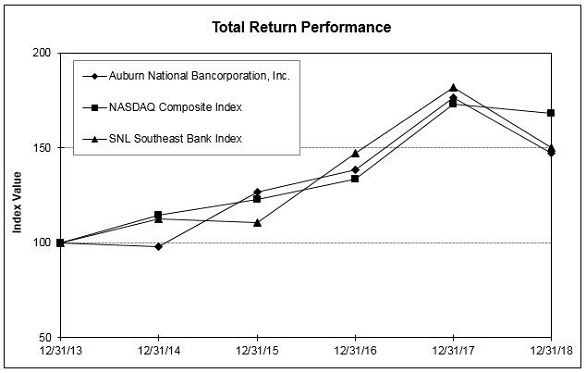The soundness of other financial institutions could adversely affect us.
We have exposure to many different industries and counterparties, and routinely execute transactions with counterparties in the financial services industry, including brokers and dealers, central clearinghouses, commercial banks, and investment funds, our correspondent banks and other financial institutions. Our ability to engage in routine investment and banking transactions, as well as the quality and values of our investments in equity securities and obligations of other financial institutions, could be adversely affected by the actions, financial condition, and profitability of such other financial institutions with which we deal, including, without limitation, the FHLB and our correspondent banks. At December 31, 2018, the amortized cost of the Bank’s investments in FHLB and our correspondent bank’s common stock was approximately $1.1 million. Financial services institutions are interrelated as a result of shared credits, trading, clearing, counterparty and other relationships. As a result, defaults by, or even rumors or questions about, one or more financial institutions, or the financial services industry generally, have led to market-wide liquidity problems, losses of depositor, creditor or counterparty confidence in certain institutions and could lead to losses or defaults by other institutions, and in some cases, failure of such institutions. Any losses, defaults by, or failures of, the institutions we do business with could adversely affect our holdings of the debt of and equity in, such other institutions, our participation interests in loans originated by other institutions, and our business, including our liquidity, financial condition and earnings.
Nonperforming and similar assets take significant time to resolve and may adversely affect our results of operations and financial condition.
At December 31, 2018, our nonaccrual loans totaled $0.2 million, or 0.04% of total loans. We had $0.2 million in properties held as other real estate owned at December 31, 2018. Ournon-performing assets may adversely affect our net income in various ways. We do not record interest income on nonaccrual loans or OREO and these assets require higher loan administration and other costs, thereby adversely affecting our income. Decreases in the value of these assets, or the underlying collateral, or in the related borrowers’ performance or financial condition, whether or not due to economic and market conditions beyond our control, could adversely affect our business, results of operations and financial condition. In addition, the resolution of nonperforming assets requires commitments of time from management, which can be detrimental to the performance of their other responsibilities. There can be no assurance that we will not experience increases in nonperforming loans in the future.
Our allowance for loan losses may prove inadequate or we may be negatively affected by credit risk exposures.
We periodically review our allowance for loan losses for adequacy considering economic conditions and trends, collateral values and credit quality indicators, including pastcharge-off experience and levels of past due loans and nonperforming assets. We cannot be certain that our allowance for loan losses will be adequate over time to cover credit losses in our portfolio because of unanticipated adverse changes in the economy, market conditions or events adversely affecting specific customers, industries or markets, and changes in borrower behaviors. If the credit quality of our customer base materially decreases, if the risk profile of the market, industry or group of customers changes materially or weaknesses in the real estate markets worsen, borrower payment behaviors change, or if our allowance for loan losses is not adequate, our business, financial condition, including our liquidity and capital, and results of operations could be materially adversely affected. The Financial Accounting Standards Board (the “FASB”) adopted Accounting Standards Update (“ASU”)No. 2016-13 “Financial Instruments – Credit Losses (Topic 326): Measurement of Credit Losses on Financial Instruments” on June 16, 2016, which changed the loss model to take into account current expected credit losses (“CECL”). ASUNo. 2016-13 is effective for our fiscal year beginning January 1, 2020. We have not yet determined how ASUNo. 2016-13 will affect our results of operations and financial condition. CECL implementation requires significant time and costs, and CECL’s effect on our income, the variability of our income and regulatory capital could be material, notwithstanding a three-yearphase-in of CECL for regulatory capital purposes.
Changes in the real estate markets, including the secondary market for residential mortgage loans, may continue to adversely affect us.
Notwithstanding changes made by the 2018 Growth Act, the effects of the CFPB changes to mortgage and servicing rules effective at the beginning of 2014, the CFPB’s TRID rules for closed end credit transactions secured by real property that became effective in October 2015, enforcement actions, reviews and settlements, changes in the securitization rules under the Dodd-Frank Act, including the risk retention rules that became effective on December 24, 2016, and the Basel III Rules could have serious adverse effects on the mortgage markets and our mortgage operations.
The TRID rules have affected our current and proposed mortgage business and have increased our costs as a result of our compliance efforts. In addition, the CFPB’s regulations that lenders determine whether a consumer has the ability to repay a mortgage loan have limited the secondary market for and liquidity of many mortgage loans that are not “qualified mortgages.”
24
